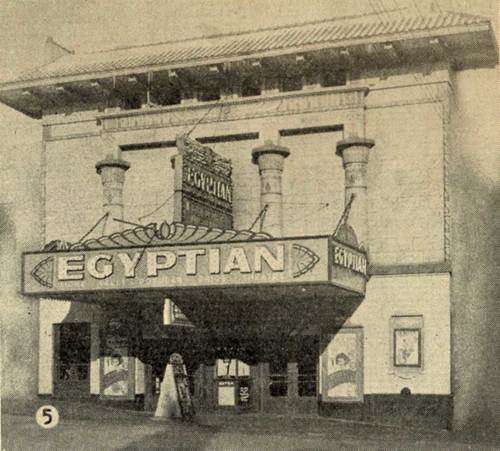|
Builder: Möller Organ Co., Op. 2537, 1917. Manuals: 2 Ranks: Unknown Action: Electro-pneumatic Notes: The Princess Theater opened on October 17, 1912 at 127 North Phillips Avenue. There had been a famous Princess theater in Chicago and perhaps others before, but this one occupied the same space as the Princess Confectionary, which may suggest that, to save money in signage, the name was carried forward. The theater’s manager, Stanley J. Smith, promised that it would be one of the best motion picture houses in the state. It was the only one featuring a new, expensive innovation in film exhibition; a mirrored screen. This screen would reflect more projector light back to the audience, making for a much better presentation. During the grand opening of the 500-seat theater, Smith promised a free souvenir for the ladies. In September of 1915, a second projector was added to the booth of the Princess. As film became more popular, theaters encountered a greater number of films long enough to take up more than one reel. The projectionist would start the first reel on the first projector, and set the second reel on the number two projector. When the first reel was nearly done, the projectionist would switch cameras at a point marked on the film with what was referred to as a cigarette burn. A third reel could be added, if necessary, using the first projector. Each reel of film could last 10-26 minutes, depending on whether the film was displayed at 16 or 24 frames per second. Things were going well for the Princess Theater, and by 1916, it was due for some updates. A new Minusa gold fibre screen replaced the old one. The new screen promised to reduce that annoying flicker that was so hard on the eyes. The interior was redesigned to reflect a French-style drawing room. Five hundred new seats were added to double the seating in the theater. The new, wider seats were adorned with exquisitely carved panels on the aisle sides and backs, upholstered with green Morroco leather, that tilted back for maximum comfort. The leather matched green draperies which hung on either side of the screen, made by designers at Shriver-Johnson department store. In 1924, on invitation of theater magnate Sid Grauman, Updegraff went on a whirlwind tour of the West Coast, after which he sold the Princess to businessman John O. Sholseth. Unlike Updegraff, Sholseth was not particularly adept at showmanship, and ran the business with less success. He ended up selling to Samuel P. Cornish in 1926. Upon taking over the business, Cornish reduced ticket prices. A short time later, he closed the theater for three weeks to expand the stage for more live performances to accompany the films. In 1928, Cornish sold the Princess to J. J. McCarthy, a North Dakota theater owner. He sold the Princess back to John O. Sholseth the next year. In December, 1930, Sholseth sold the theater to Leonard L. Kaplan, who had plans to renovate and reopen as the New Princess. On January 18, 1931, Kaplan re-opened the redecorated Princess theater as the Dakota. He started with a play called Broadway and promised all of the latest entertainments with the addition of sound. Organ Historical Society as of 2020. |
 |
|
|
|